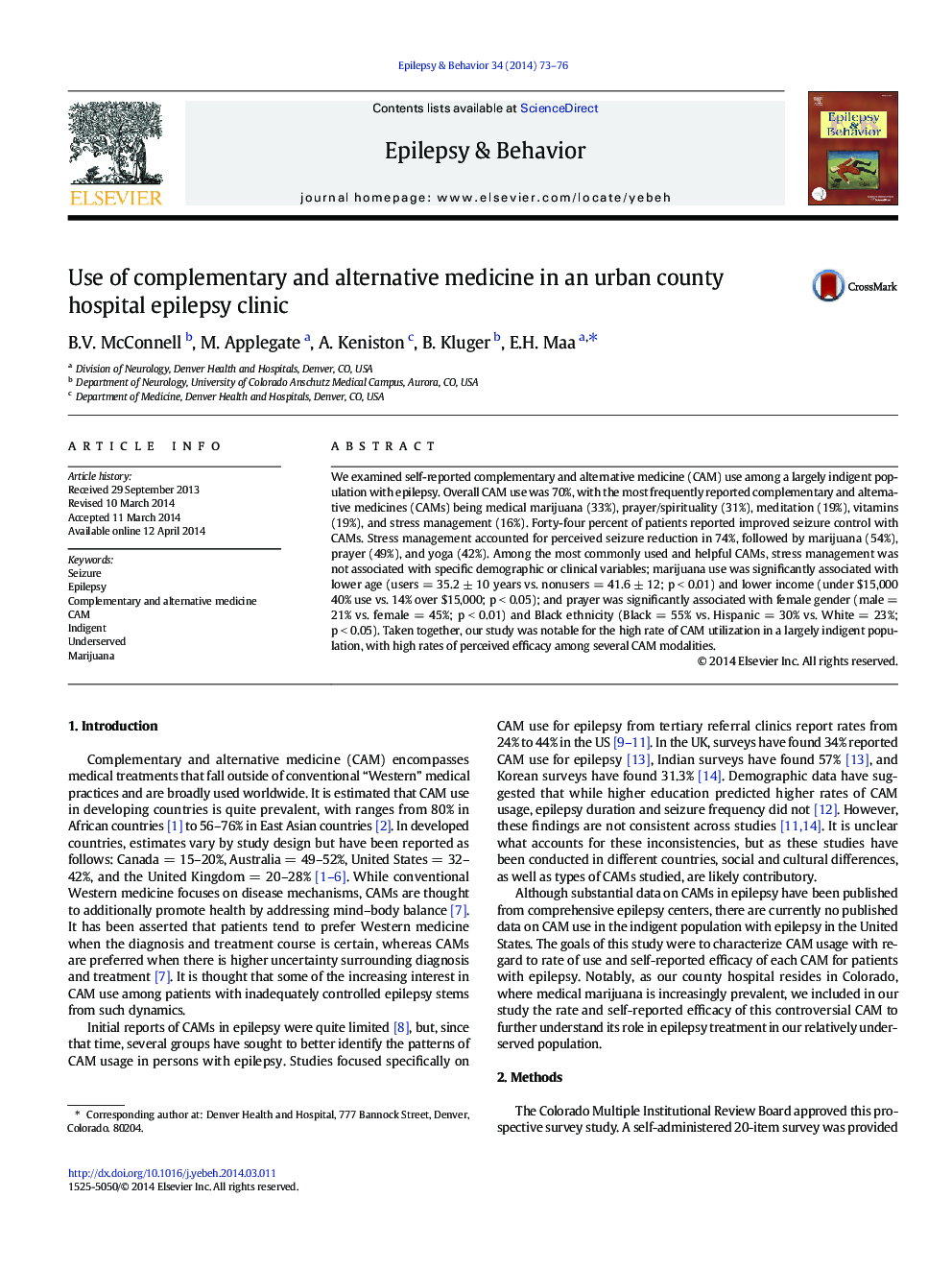| Article ID | Journal | Published Year | Pages | File Type |
|---|---|---|---|---|
| 6012341 | Epilepsy & Behavior | 2014 | 4 Pages |
Abstract
We examined self-reported complementary and alternative medicine (CAM) use among a largely indigent population with epilepsy. Overall CAM use was 70%, with the most frequently reported complementary and alternative medicines (CAMs) being medical marijuana (33%), prayer/spirituality (31%), meditation (19%), vitamins (19%), and stress management (16%). Forty-four percent of patients reported improved seizure control with CAMs. Stress management accounted for perceived seizure reduction in 74%, followed by marijuana (54%), prayer (49%), and yoga (42%). Among the most commonly used and helpful CAMs, stress management was not associated with specific demographic or clinical variables; marijuana use was significantly associated with lower age (users = 35.2 ± 10 years vs. nonusers = 41.6 ± 12; p < 0.01) and lower income (under $15,000 40% use vs. 14% over $15,000; p < 0.05); and prayer was significantly associated with female gender (male = 21% vs. female = 45%; p < 0.01) and Black ethnicity (Black = 55% vs. Hispanic = 30% vs. White = 23%; p < 0.05). Taken together, our study was notable for the high rate of CAM utilization in a largely indigent population, with high rates of perceived efficacy among several CAM modalities.
Related Topics
Life Sciences
Neuroscience
Behavioral Neuroscience
Authors
B.V. McConnell, M. Applegate, A. Keniston, B. Kluger, E.H. Maa,
